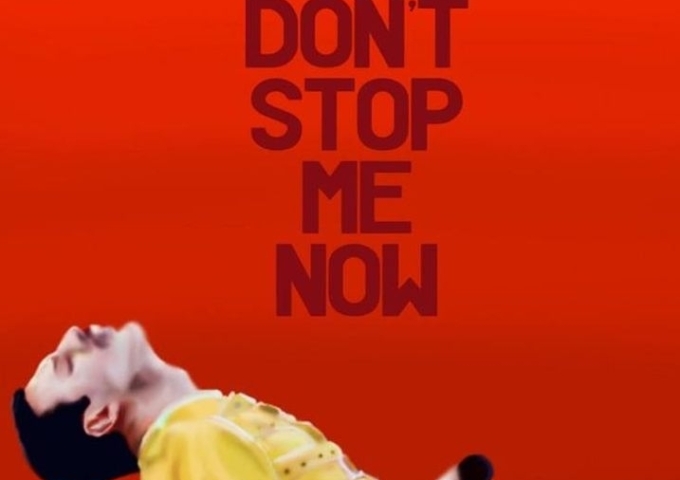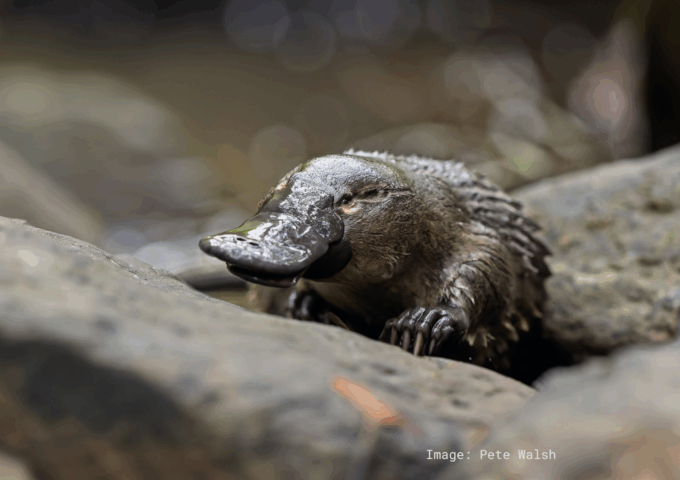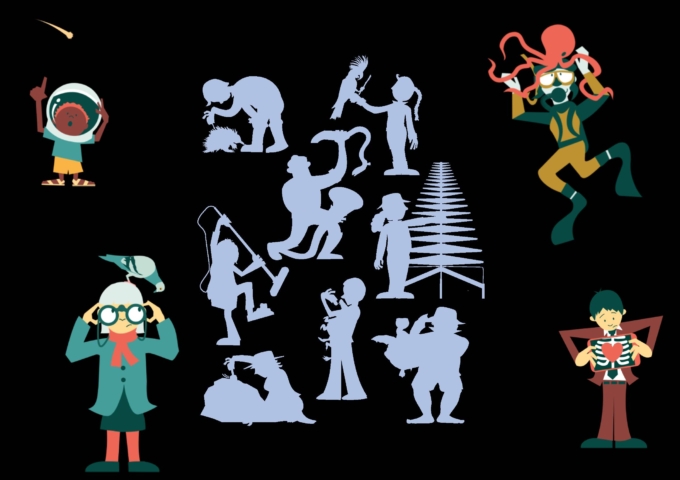
Astro-boy, bird watcher, octopus wrangler, heart guy… We love our National Science Week characters. They grace our t-shirts, bags, street banners, posters and more.
But it’s time to welcome some new members to the crew. We consulted our brains trust of Inspiring Australia managers and local National Science Week coordinating committee members and asked each state and territory to come up with ideas for new characters to represent the science happening in their part of Australia.
We will be launching them over the coming days here and on social media. Watch this space for updates and follow us on Facebook and Instagram.
Australian Capital Territory
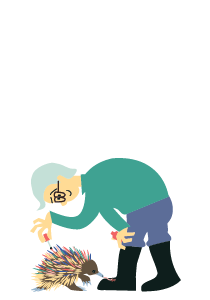
Every few years, a group of nature’s engineers living near Canberra can be seen wearing nail polish.
Short-Beaked Echidnas (Tachyglossus aculeatus) and other wildlife live relatively safely at Mulligans Flat in the Australian Capital Territory. Mulligan’s Flat is Australia’s largest single Box-gum Grassy-woodland area managed for conservation. It is the only woodland of this type free from the ongoing impacts of foxes, cats, rabbits, goats, deer and hares.
Echidnas are important ecosystem engineers. They burrow through 200 cubic metres of soil each year, improving soil quality, helping seeds to germinate, and creating better habitat for other wildlife.
Monitoring echidna populations at Mulligan’s Flat is an important part of ensuring this sanctuary remains a healthy habitat. The Echidna Sweep sees scientists and volunteers from the Woodlands and Wetlands Trust carefully search for Short-Beaked Echidnas, marking the spines of the ones they find with coloured nail polish. Our new Canberran character honours their efforts.
“The echidna is an amazing symbol of nature’s recovery potential at Mulligans Flat Woodland Sanctuary,” says Dr Jason Cummings, the CEO of Woodlands & Wetlands Trust. “After we removed the European foxes, our echidna numbers have grown, making it a most reliable place to experience echidnas.”
New South Wales

Dark, moonless nights are perfect for froggy romance. With limited light to give away their location to predators, frogs and toads take a risk to call out for a prospective mate. Scientists and volunteers eavesdrop on their amphibious love songs, recording them with smartphones, apps or recording devices to identify these curious creatures.
This is an example of ‘bioacoustic monitoring’ in action. Bioacoustic science is the study of animal sounds. Monitoring and recording animal sounds is useful for studying nocturnal, shy, or otherwise hard-to-find animals, such as owls, other birds, bats, koalas and more. Frog and toad calls are particularly sought after because these animals need a healthy environment to live in. Their presence or absence acts as an indicator of water quality and ecosystem health.
Australia is a large land to cover. You can help scientists find our croaky friends through citizen science projects such as Frog ID (www.frogid.net.au) and FrogWatch – all you need is a smartphone.
“Frog ID is one of the most popular citizen science apps ever,” says Inspiring Australia New South Wales Manager Meredith Hall. “It’s captured the public’s imagination, so we’re really pleased to have this frog and its scientist representing our state!”
Northern Territory
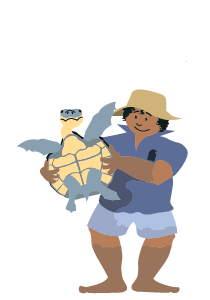 We are excited to join with InspiredNT to introduce the new National Science Week character for the Northern Territory…
We are excited to join with InspiredNT to introduce the new National Science Week character for the Northern Territory…
First Nations rangers are at the forefront of freshwater turtle conservation in the Territory and beyond. One such species is the Pig-nosed Turtle (Carettochelys insculpta).
In addition to their prominent porcine snout, Pig-nosed Turtles have a shell covered with soft-pitted skin instead of hard protective ‘scutes’, the plates that cover the shells of most turtles and tortoises. This makes them more vulnerable than other turtles. They can even get sunburnt!
They have been hit hard by habitat loss, pests and climate change and are an endangered species. Fortunately, First Nations rangers and researchers from Charles Darwin University are working to monitor, study and preserve this unique animal, the only living member of the genus Carettochelys. First Nations people have a vast knowledge of Australian animals and are vitally important in research and conservation efforts on Country.
“The species is found in the tropical southern rivers of New Guinea and northern rivers of Australia,” says InspiredNT Manager Gargee Lad. “In Australia it is only found in the Northern Territory!”
Queensland
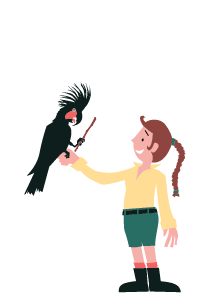
A mohawk made of black feathers, striking red patches on their faces, loud, large, and often seen drumming on tree trunks − palm cockatoos are the punk rockers of the rainforest!
Palm cockatoos (Probosciger aterrimus) are extremely rare, found only in remote rainforests and savannas of Cape York Peninsula in Queensland, the Aru Islands and New Guinea. They are Australia’s largest parrot and the only bird in the world that uses a tool musically: males use sticks or seedpods to tap rhythmically on trees.
“Palm Cockatoos are not just drummers of the Australian rainforest, they’re living symbols of creativity, resilience, and the wild beauty of Cape York,” says wildlife biologist and Inspiring Australia Queensland ambassador Dr Christina Zdenek. “It’s momentous to see them celebrated as a National Science Week character, bringing attention to their endangered status and inspiring curiosity in science and conservation.”
South Australia
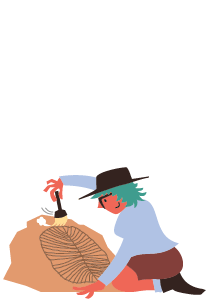
Over 500 million years ago, long before dinosaurs, the area we now know as the Flinders Ranges was part of the seafloor of an ancient ocean that teamed with strange organisms. This was the Ediacaran Period, which saw life on Earth transform from a microbial world to one full of complex plants and animals.
Paleontologists and tourists come from all over the world to see our treasure trove of Ediacaran fossils, a snapshot of the long-gone ocean where the first complex animals evolved and were preserved in the sandstone beds of South Australia. They see fossils of long-extinct animals, like Dickinsonia (featured in our new character), a segmented, pancake-shaped animal that could glide gracefully like a slow stingray across the sea floor, absorbing food through its body.
“As a proud South Australian and a passionate geoscientist, I’m excited that Ediacaran fossils are being celebrated in the new National Science Week character for South Australia,” says Dr Steve Hill, Geoscience Australia’s Chief Scientist.
“These fossils from the incredible Flinders Ranges tell an almost 600-million-year story of the beginnings of complex life, hundreds of millions of years before dinosaurs evolved. They are a jewel in the crown of South Australian science and are important to all Australians, as well as the whole world. It therefore makes sense that they should be featured in National Science Week. I hope this character sparks conversations and encourages people of all ages to consider the thrills of discovery that Earth Science can bring.”
 Tasmania
Tasmania
The next character illustrates how science gives us hope. We are excited to join with Inspiring Tasmania to introduce the new National Science Week character for the Apple Isle…
Tasmanian devils can get cancer. Devil facial tumour disease has caused a huge decline in the wild population of Tassie devils in recent decades. This is partly because they’re famously aggressive animals and it’s a transmissible cancer – it’s passed from one devil to the next as they fight and bite each other.
The good news is that scientists are trialling a vaccine against devil facial tumour disease. Cleverly, they developed vaccines incorporated into delicious edible food baits… much nicer than an injection! So far, the immune responses of the trial devils are promising.
“‘It’s great to see the important work of Tasmanian scientists reflected in the new Science Week character,” says Dr Tiana Pirtle, Inspiring Australia, Tasmania Manager.
“Tasmanian Devils are iconically Tasmanian. The research going into developing vaccines to protect Devils from the Facial Tumour Disease will help to ensure we continue to have devils into the future. It’s a clear reminder of how science can really make a real difference.”
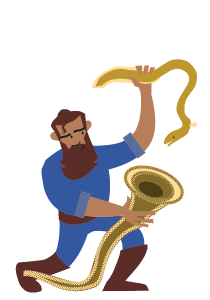 Victoria
Victoria
Our next character comes from a UNESCO World Heritage Site. We’re thrilled to join with Inspiring Victoria to introduce the new Science Week character for their state…
Southwestern Victoria has the largest and oldest aquaculture network in the world. The Gunditjmara people built a complex system of channels, dams and weirs from local basalt rock to manage flood plains and water flows to trap and harvest kooyang (short-finned freshwater eel) in trumpet-shaped traps woven from reeds and grasses.
More than 6,600 years on, this example of Indigenous engineering is still operating.
“We are excited to see that the incredible science and engineering behind the Budj Bim Cultural Landscape is being celebrated in the new National Science Week character for Victoria,” says Aaron Morgan, a Budj Bim World Heritage Ranger who is the inspiration for this character.
“Our ancestors have worked to care for and understand this Country for thousands of years, and we are proud to carry on that work today. We’d love to see more people visit. Hopefully, the new character will help raise awareness of Budj Bim and encourage more people to come and learn from and with us.”
“We’re very proud of the history of science in our state and celebrate Indigenous people as the First Scientists” says Emma Donnelly, Inspiring Victoria Manager. “We hope future generations of scientists and engineers will be inspired by this legacy.”
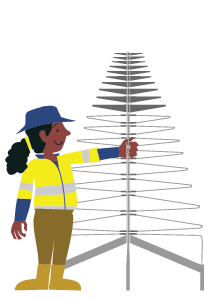 Western Australia
Western Australia
National Science Week is sometimes referred to as ‘Science Christmas’, so it’s only fitting that we have a new character that incorporates a science Christmas tree! We’re delighted to join with Inspiring Western Australia to introduce the new character for WA…
The remoteness and relatively low population of outback WA makes it extremely ‘radio-quiet’ – perfect for radio astronomy and detecting weak signals from space. It’s a vital part of the international Square Kilometre Array (SKA) radio telescope project.
The SKA Observatory is building the SKA-Low telescope on Wajarri Yamaji Country in WA, and the SKA-Mid telescope in the Karoo region of South Africa.
Standing with one of SKA-Low’s 131,072 tree-like antennas, our WA character illustrates Australia’s important place in global scientific efforts to study the history of the Universe.
“We’re excited to see the SKA-Low telescope featured in National Science Week promotions – this is a very significant science project for Australia, says Dr Sarah Pearce, SKA-Low Telescope Director.
“We’re developing new technologies, growing Australia’s astronomy community, and are committed to reconciliation and Indigenous advancement,” explains Dr Pearce.
“It’s great to see that the character takes inspiration from the people working on Inyarrimanha Ilgari Bundara, the CSIRO Murchison Radio-astronomy Observatory to build the SKA-Low telescope, showing that you don’t need to wear a lab coat to contribute to science.”




